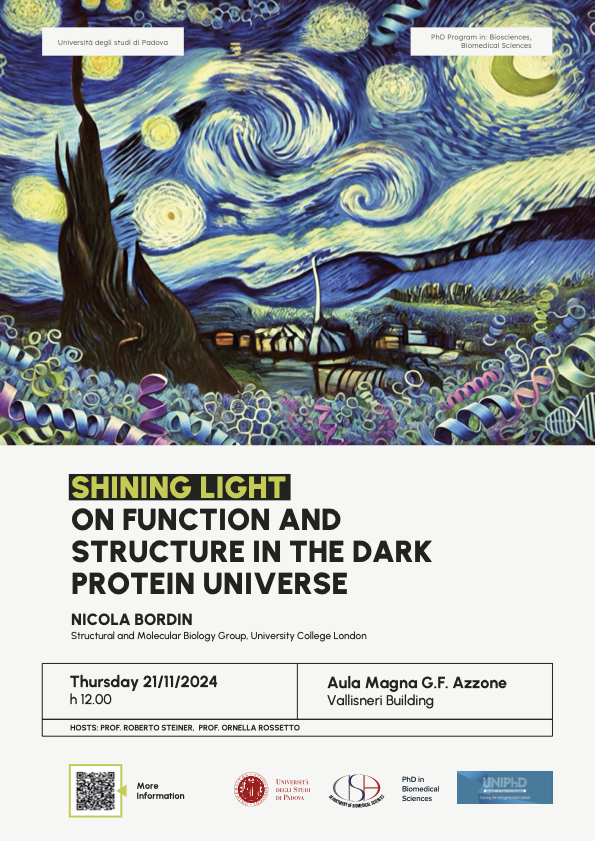ABSTRACT:
Proteins, the drivers of machinery of cells and viruses, regulate their internal processes and interactions with the environment.
Their shapes evolved to perform different roles across species, tightly linking structures to their functions.
The collection of all proteins, known as the “Protein Universe” is vast and mostly unexplored, with few experimentally derived functions and structures. Recent advances in deep learning, combined with vast structural datasets, biological networks and evolutionary signals are helping to shine a light on the previously unknown features of protein space. In particular, we will cover new predictors based on embeddings from protein language models can detect remote evolutionary homologs, classify proteins according to their function, and identify functional sites, going beyond the current limitations of Hidden Markov Models.
These machine learning based tools, when combined with other sources of data such as networks, phenotypes and structures, can shine light on uncharacterised proteins involved in ageing or unveil putative targets for drug repurposing. As ‘dark’ regions of structure and function still exist, potentially containing the answer to existing and future biological questions, let’s explore some new approaches towards a brighter protein universe.
VENUE:
Aula Magna “Giovanni Felice Azzone” – Vallisneri Building.
via Ugo Bassi, 58B
35121 – Padua – Italy


